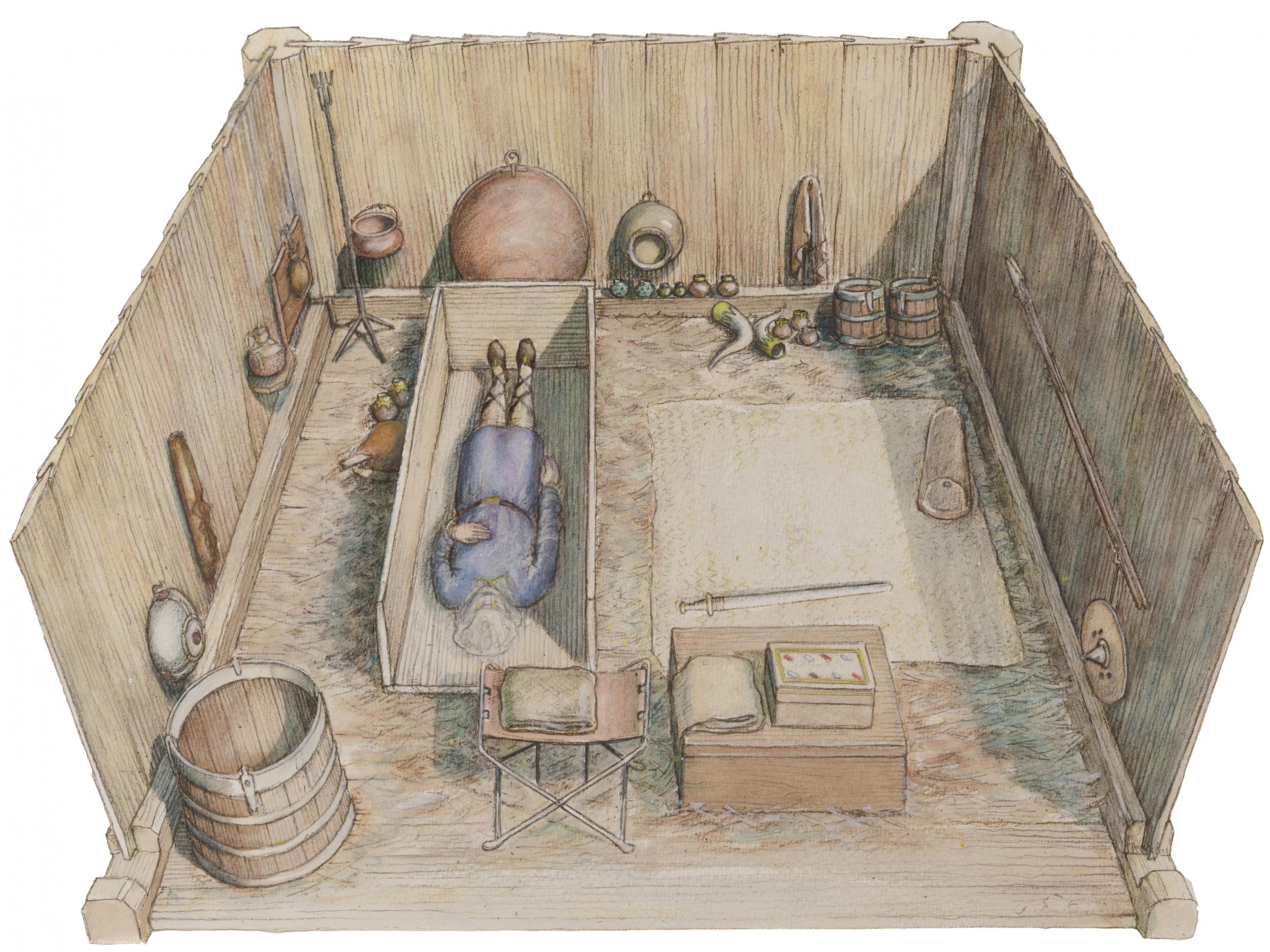Inside ‘British version of Tutankhamun’s tomb’ discovered between a pub and an Aldi
Burial chamber would have required ‘a huge investment in skilled labour, as well as materials’, say archaeologists

Archaeologists have recreated in painstaking detail what they called the UK’s answer to Tutankhamun’s tomb – a royal burial site dating back to Anglo-Saxon times discovered by the side of a road in Essex.
They believe the burial chamber, unearthed near a pub and an Aldi supermarket, may have held the remains of Seaxa, brother of King Saebert.
Scientists have spent 15 years excavating the site in Prittlewell, Southend-on-Sea. They have pieced together artefacts, some of which are 1,400 years old, to build a new picture of how the chamber looked when it was first created.
Newly analysed objects suggest the tomb is older than previously thought, ruling out a previous hypothesis that it housed the deceased king himself.
Researchers at the Museum of London Archaeology (Mola) estimated the structure took 113 working days to build, representing “a huge investment in skilled labour, as well as materials”.
The site was the earliest Christian Anglo-Saxon princely burial found in the UK, said research director, Sophie Jackson.
She added: “I think it’s our equivalent of Tutankhamun’s tomb. Getting an intact version of this and seeing how everything is positioned and what he’s got with him. I think the thing that’s so strange about it is that it was such an unpromising-looking site. It’s between a bit of railway and a bit of road, essentially a verge. It’s not where you’d expect to find it.”

Work began on the site in 2003, and among the items discovered were a painted box, drinking horns and a flagon originating from the Byzantine empire, as well as gold foil crosses, suggesting the dead male had converted to Christianity.
The box is the only surviving example of painted Anglo-Saxon woodwork in Britain.
The male, believed to have been at least adolescent in age, would have stood about 5ft 8in when he died around the year 580, researchers said. Missionaries sent by Pope Gregory I to convert the Anglo-Saxons only landed in Kent in 597.
Saebert died in about 616, meaning the tomb cannot be his. Experts used organic material from drinking horns found inside for radio-carbon dating.
A team of 40 worked on the project, funded by Southend-on-Sea Borough Council and Historic England.
The find and subsequent research has helped “transform our understanding of [Anglo-Saxons’] early history”, Professor Simon Keynes of Trinity College, Cambridge, told The Independent.
“Prittlewell was from the moment of its discovery in 2003 seen to be something very special, which would do for the East Saxons what Sutton Hoo has been doing since 1939 for the East Angles: cast new light on the elite, as shown by their burial customs, during the period of their conversion to Christianity in the late sixth and early seventh centuries,” he said.
He added: “We know the basic story from Bede’s Ecclesiastical History of the English People, written in 731, but Sutton Hoo and Prittlewell give us the material evidence, in the form of the elite or princely burial rituals, which take us closer to the material realities at this elevated level of society. Finds like Sutton Hoo, Prittlewell, and the Staffordshire Hoard add the dimensions which only material evidence of this kind can provide.”
Sutton Hoo in Suffolk is a hugely significant archaeological area where a trove of Anglo-Saxon artefacts and graves have been found since its discovery in 1939. The Staffordshire Hoard, unearthed near Lichfield in 2009, is the largest-ever find of Anglo-Saxon gold and silver artefacts, numbering some 4,000.
Objects from the Prittlewell site are due to go on permanent display at Southend Central Museum from 11 May, having previously been shown around the world.
Additional reporting by Press Association
Join our commenting forum
Join thought-provoking conversations, follow other Independent readers and see their replies
Comments